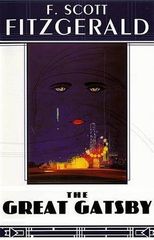The Great Gatsby


F. Scott Fitzgerald's The Great Gatsby is a quintessential novel of the Jazz Age, exploring the world of the wealthy elite in the 1920s. The story is narrated by Nick Carraway, a bond salesman who moves to West Egg, Long Island, and becomes neighbors with the mysterious Jay Gatsby.
The novel is a masterpiece in its exploration of the American Dream and the concept of reinventing oneself. Gatsby, whose past is shrouded in mystery, reinvents himself as a wealthy socialite in order to win back his former love, Daisy Buchanan. He throws extravagant parties at his mansion, hoping that Daisy will attend one of them, so he can finally be reunited with her.
The novel is full of complex characters, each with their own motivations and desires. Gatsby is enigmatic, charming, and ultimately tragic, as his pursuit of Daisy leads to his downfall. Daisy, for her part, is a complicated character, torn between her love for Gatsby and her loyalty to her husband, Tom. Tom is a wealthy and privileged man, whose arrogance and selfishness create chaos in the lives of those around him. And then there's Nick, the moral center of the novel, who is witness to all the drama and tragedy that unfolds.
The Great Gatsby is also a novel about the excesses of the wealthy and the moral decay of society. Fitzgerald explores the dangers of living a life of excess, where materialism and superficiality reign supreme. The novel is a scathing critique of the American Dream, showing that the pursuit of wealth and status can lead to moral decay and ultimately, ruin.
The novel's setting is also a crucial element in the story. The decadence of the Jazz Age is perfectly captured in Fitzgerald's vivid descriptions of Gatsby's mansion, the extravagant parties, and the overall atmosphere of excess and indulgence. The use of symbolism and imagery, particularly the green light at the end of Daisy's dock, add depth and meaning to the story, making it a work of great literary significance.
Fitzgerald's writing style is poetic and beautiful, with a keen eye for detail and an ability to create unforgettable images. His prose captures the atmosphere and mood of the novel perfectly, transporting the reader to a bygone era of glamour and decadence.
In conclusion, The Great Gatsby is a masterpiece of American literature, exploring themes of love, wealth, and the moral decay of society. Fitzgerald's writing is beautiful and poetic, and the characters are complex and unforgettable. The novel is a timeless classic that continues to captivate readers today, and its message about the dangers of excess and the pursuit of the American Dream remains just as relevant now as it did when the novel was first published in 1925.